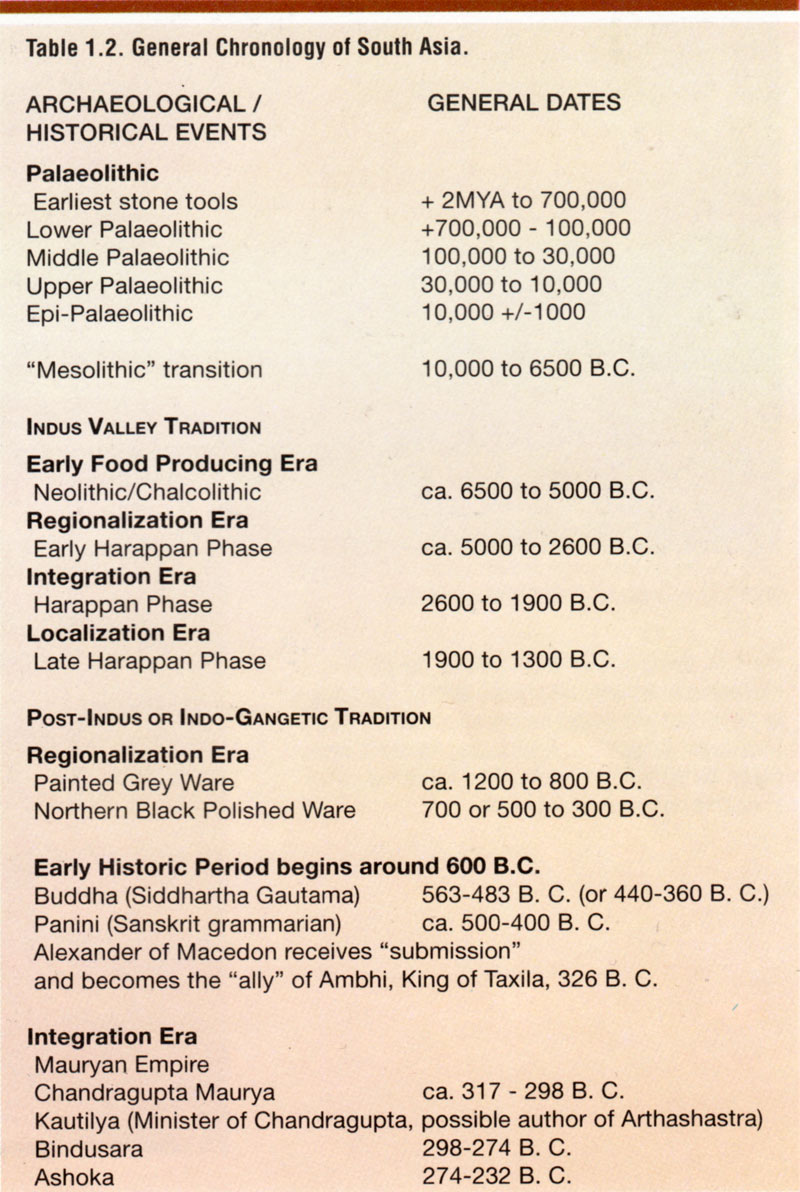
Asked by Mohan Rao Balaga
Jonathan Mark Kenoyer writes in his book Ancient Cities of the Indus Civilization (p. 25):
"Many scholars were not satisfied with these relative dating methods [of the Indus civilization by John Marshall and Sir Mortimer Wheeler from 1930s-50s], which relied on distant Mesopotamian chronologies, but it was not until after the introduction of the radiocarbon dating technique in the 1950s that the situation began to change. During his excavations at Mohenjo-daro in 1964-65, George F. Dales collected the first series of samples for radiocarbon dating from the latest levels of the city. Unfortunately, he was unable to reach the earliest levels because they were submerged beneath the high water table. No further major excavations have been undertaken at Mohenjo-daro, and the origins of this city remain obscure, but Dales was able to fulfill his goals through excavations at the city of Harappa.
"From 1986 to 1996, excavations at Harappa have produced over seventy new radiocarbon dates that help to refine the chronology of the urban centers.1 Other excavations at smaller towns and villages throughout the Indus Valley an beyond have produced hundreds of additional radiocarbon dates.2 Taken all together, these dates indicate that the origin and spread of this civilization were not a uniform process and that there were time lags in some regions.3 [See a General Chronology of the Indus Valley Tradition]
"In general the formation of large urban centers such as Mohenjo-daro and Harappa, located in the core areas of the Indus Valley, can be dated from around 2600 to 1900 B.C. In speaking of cultures, however, 700 years is an extremely long time, spanning nearly 30 generations. Many important changes in social organization, politics, language and even religion took place during the lives of these cities. We know that in Mesopotamia and Egypt many kingdoms rose and fell within a period of 100 years, and along with changes in politics there was often a change in the religious order. The recent studies at the site of Harappa are helping to rectify this problem, so that is is now possible to identify and date several major phases in the growth and development of the city. Changes in artefact styles and painted pottery motifs are also being identified. However, it is still premature to apply these finds to other cities such as Mohenjo-daro, and for the purposes of this book we must be content with the big chronological picture."
1. Jonathan Mark Kenoyer, "Urban Process in the Indus Tradition: A Preliminary Model from Harappa." Harappa Excavations Reports 1986-1990 (pp. 26-60). ↩
2. Gregory L. Possehl, Radiometric Dates for South Asian Archaeology. An Occasional Publication of the Asia Section [Philadelphia: University of Pennsylvania Museum, 1994]. ↩
3. Gregory L. Possehl. "Revolution in the Urban Revolution: The Mergence of Indus Urbanism," Annual Review of Anthropology 19 (1990): 261-82; Gregory L. Possehl, "The Date of Indus Urbanization: A Proposed Chronology for the Pre-urban and Urban Harappa Phases," in South Asian Archaeology, 1991, ed. Adalbert J. Gail and Gerd J.R. Mevissen (Stuttgart: Steiner, 1993), 231-49; Jim G. Shaffer, "The Indus Valley, Baluchistan and Helmand Traditions,: Neolithic Through Bronze Age," in Chronologies in Old World Archaeology, ed. Robert W. Ehrich, 3rd ed. (Chicago: University of Chicago Press, 1992), vol 1, 441-64. ↩
Above: Jonathan Mark Kenoyer, Ancient Cities of the Indus Civilization, p. 24.
